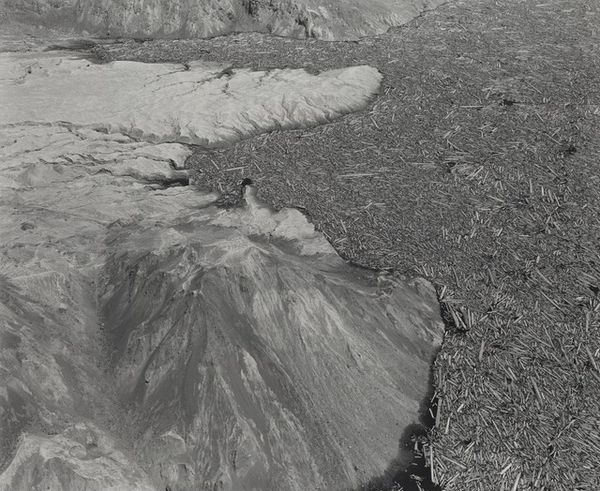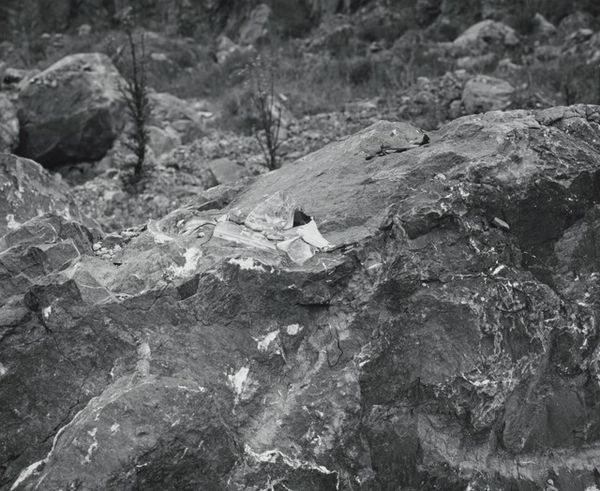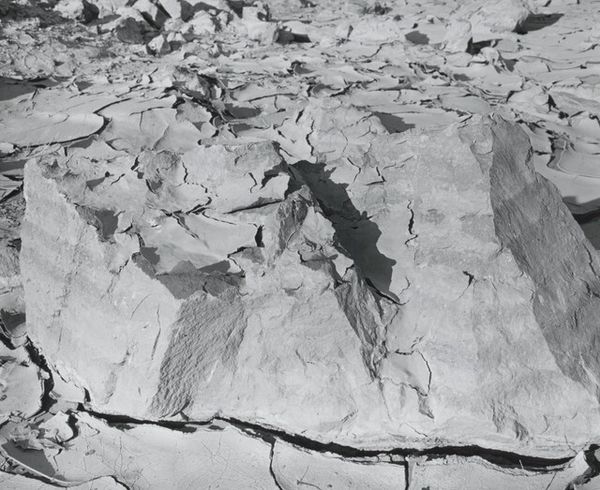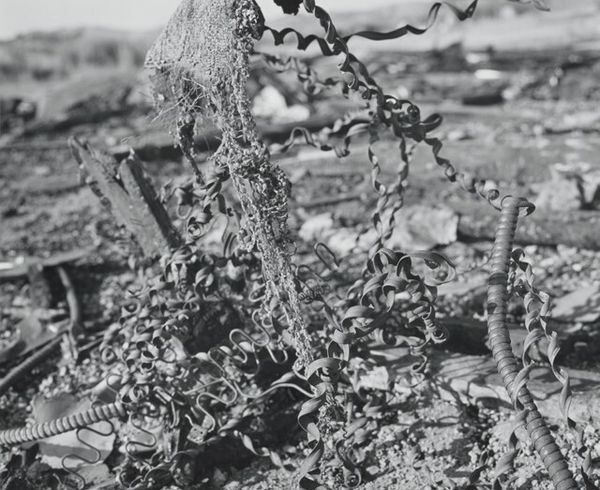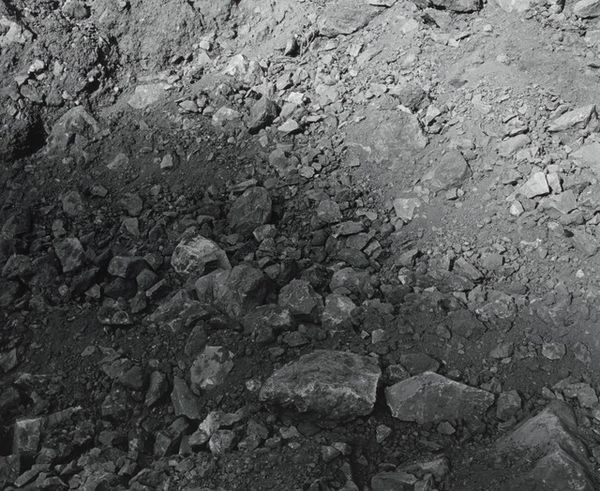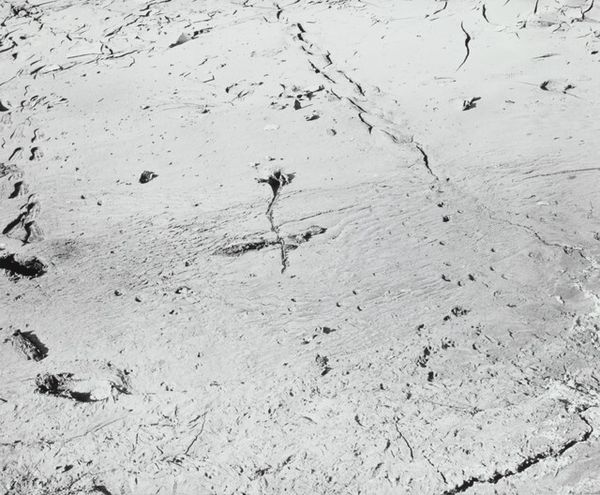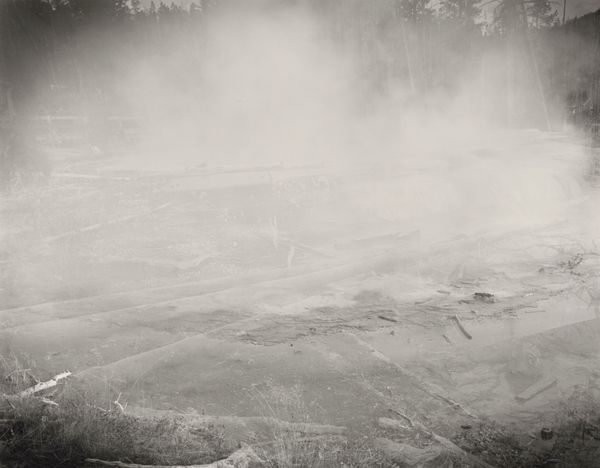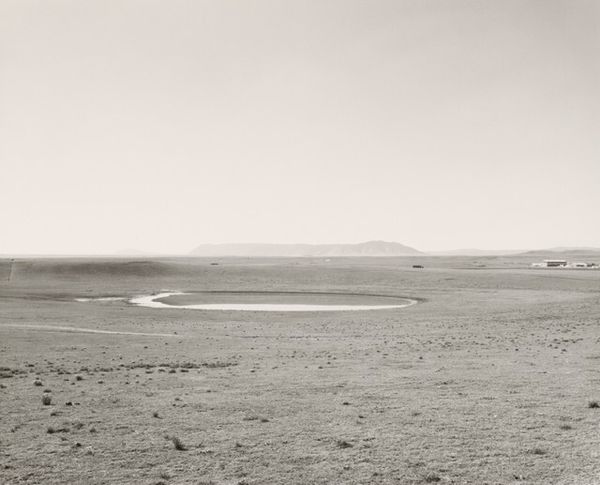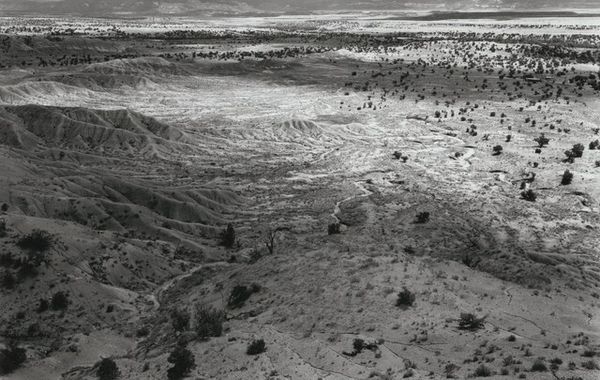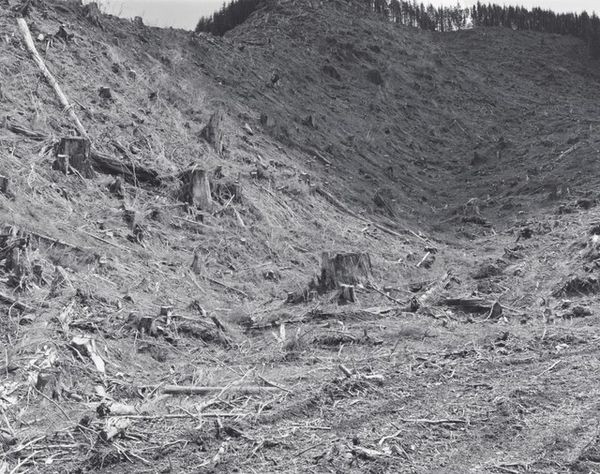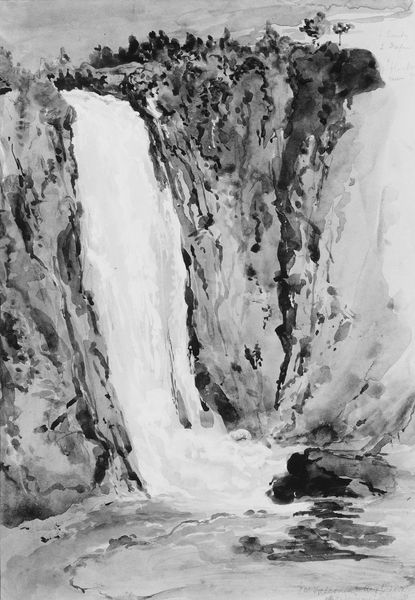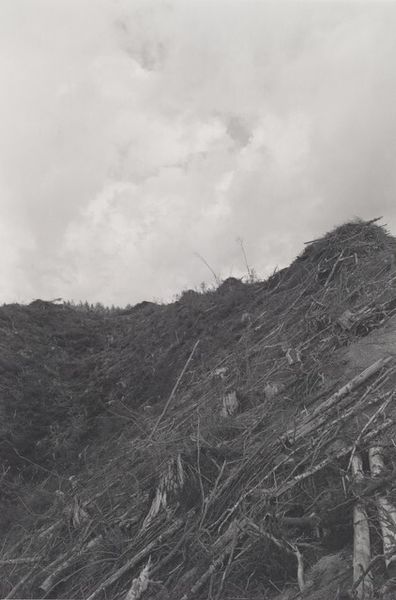
photography, site-specific, gelatin-silver-print
#
conceptual-art
#
black and white photography
#
minimalism
#
landscape
#
land-art
#
photography
#
site-specific
#
gelatin-silver-print
#
monochrome photography
#
monochrome
#
monochrome
Dimensions: image: 18.8 × 22.9 cm (7 3/8 × 9 in.) sheet: 20.32 × 25.4 cm (8 × 10 in.)
Copyright: National Gallery of Art: CC0 1.0
Editor: So, this is Lewis Baltz’s "San Quentin Point, no. 22," a gelatin silver print, likely from the early to mid-80s. It's… bleak, almost lunar, isn’t it? All cracked earth and mud. What strikes you about it? Curator: The cracks, you see, speak volumes. Think of the cracked earth as a metaphor for societal fissures, for fractures within our own understanding of the landscape and our relationship to it. Consider the site itself, San Quentin Point, adjacent to a prison—what weight does that specific place bring to this seemingly "simple" landscape? Editor: It’s interesting you mention societal fractures… the monochrome emphasizes the starkness. Is Baltz trying to show a specific kind of environmental impact? Curator: Environmental, yes, but also societal. Monochrome flattens the image, making it less about picturesque beauty and more about texture and form. Those animal tracks in the mud; are they traces of life persisting, or signs of a desperate search for sustenance in a depleted land? It invites us to contemplate the cyclical nature of destruction and potential rebirth. Editor: So, not just what's visible, but also the symbolism attached to a place and time. I guess even an seemingly 'empty' landscape holds a lot of meaning. Curator: Precisely. Baltz uses a stark and seemingly detached style, almost scientific, to explore the uneasy tension between nature, culture, and the built environment. Each element echoes a larger, interconnected story. Editor: I’m definitely going to look at landscape photography differently from now on, paying closer attention to what’s not immediately apparent. Curator: Excellent. That's the power of visual language; it transcends the surface.
Comments
No comments
Be the first to comment and join the conversation on the ultimate creative platform.
